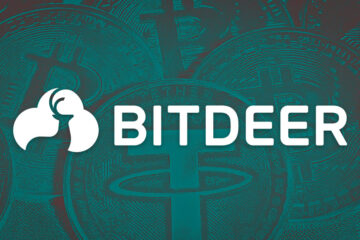Circle’s initial public offering (IPO) filing has drawn sharp criticism from industry insiders, who question its Bitcoin strategy and broader financial stability.
While the company is best known for issuing the USDC stablecoin, its recent filings have revealed details that have prompted skepticism across the crypto space.
Heavy on altcoins, light on Bitcoin and Ethereum
Circle’s crypto holdings show a surprising underweight position in Bitcoin and Ethereum.
As of Dec. 31, 2024, the company held just 73 BTC, valued at roughly $6.78 million, and 1,746 ETH, worth about $5.82 million.
These figures are notably small, especially compared to Tether’s 92,000 BTC, worth approximately $7.64 billion, which places it among the top six Bitcoin holders globally.

Instead, Circle appears to be focused more heavily on alternative cryptocurrencies. Its altcoin portfolio includes 6.25 million Sei tokens, 2.3 million Sui tokens, and over 867,000 Optimism tokens. In addition, the firm owns over 217,000 Aptos tokens and other unspecified digital assets that contribute $3.37 million to the portfolio.
The combined fair value of these assets, $18.7 million, significantly outweighs its Bitcoin and Ethereum allocations.
Critics argue this strategy signals a lack of confidence in the long-term strength of Bitcoin and Ethereum. While it may reflect optimism around emerging blockchain ecosystems, many see it as a risky move that undercuts Circle’s credibility.
Richard Heart, the founder of HEX, said:
“Circle, the company of USDC fame, held $7M of Bitcoin and $6M of Ethereum Dec 31, 2024. That’s a very small crypto holding. Some companies & people doing well are better for Bitcoin and Ethereum price than others. Honor them and show them respect.”
Circle’s valuation questioned
Besides its paltry Bitcoin and Ethereum holdings, industry insiders are also scrutinizing Circle’s financial disclosures.
Omar Kanji, a partner at Dragonfly, criticized the IPO filing, questioning how the company justifies a $5 billion valuation. He highlighted several issues, including ballooning compensation costs of $250 million annually and $140 million in general expenses.
Kanji also noted that Circle’s reliance on interest rates, which have likely peaked, puts further pressure on its core revenue stream.
Kanji concluded that the IPO might be a desperate bid for liquidity, labeling Circle’s business model as structurally flawed.
Adding to the concern, VanEck’s Wyatt Lonergan noted that Coinbase takes a significant share of USDC-related revenue.
He estimated Coinbase nets nearly $900 million out of Circle’s $1 billion income from USDC. This dependency could hurt Circle’s prospects significantly if the IPO underperforms.
Considering this, Lonergan floated a scenario where Coinbase could acquire Circle post-IPO if its stock struggles. He also suggested a bidding war could break out, with Ripple entering the mix at a potential valuation between $15 billion and $20 billion.
Mentioned in this article


 Bitcoin
Bitcoin  Ethereum
Ethereum  Tether
Tether  XRP
XRP  USDC
USDC  Solana
Solana  Lido Staked Ether
Lido Staked Ether  TRON
TRON  Dogecoin
Dogecoin  Cardano
Cardano  Figure Heloc
Figure Heloc  WhiteBIT Coin
WhiteBIT Coin  Wrapped stETH
Wrapped stETH  Bitcoin Cash
Bitcoin Cash  Wrapped Bitcoin
Wrapped Bitcoin  USDS
USDS  Chainlink
Chainlink  Wrapped eETH
Wrapped eETH  Binance Bridged USDT (BNB Smart Chain)
Binance Bridged USDT (BNB Smart Chain)  LEO Token
LEO Token  WETH
WETH  Hyperliquid
Hyperliquid  Stellar
Stellar  Monero
Monero  Zcash
Zcash  Coinbase Wrapped BTC
Coinbase Wrapped BTC  Ethena USDe
Ethena USDe  Litecoin
Litecoin  Sui
Sui  Avalanche
Avalanche  Hedera
Hedera  Shiba Inu
Shiba Inu  sUSDS
sUSDS  USDT0
USDT0  Dai
Dai  Mantle
Mantle  PayPal USD
PayPal USD  Toncoin
Toncoin  World Liberty Financial
World Liberty Financial  Cronos
Cronos  Ethena Staked USDe
Ethena Staked USDe  Uniswap
Uniswap  Polkadot
Polkadot  Aave
Aave  MemeCore
MemeCore  Bittensor
Bittensor  USD1
USD1  Rain
Rain 


